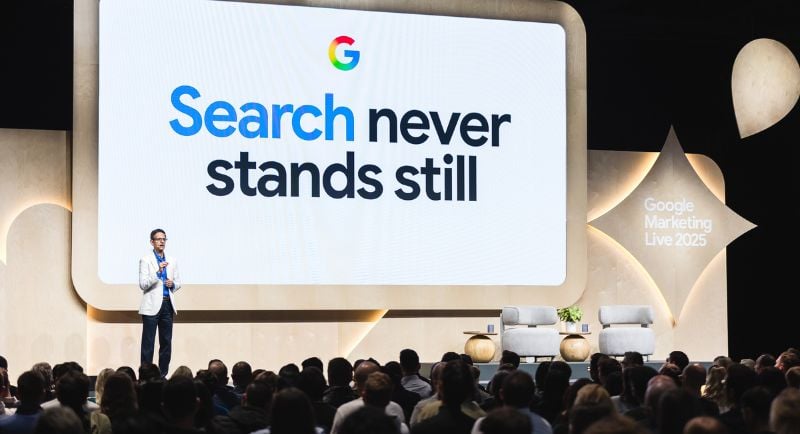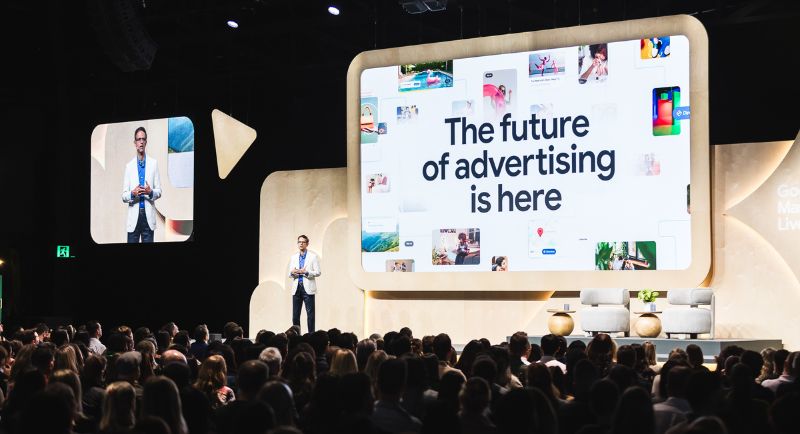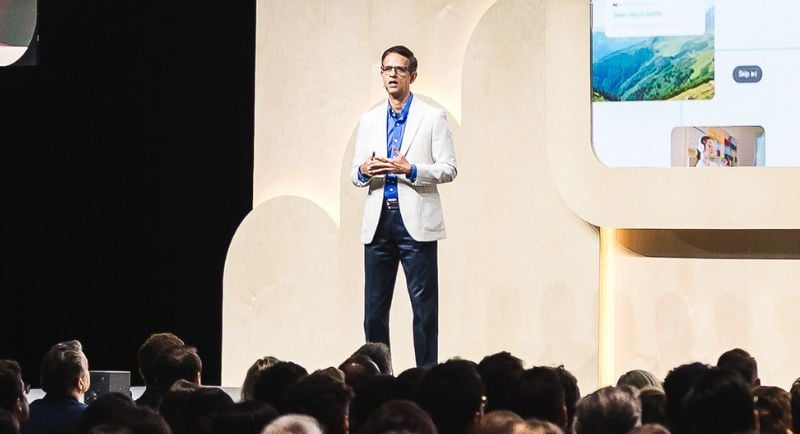Google unveiled AI-powered tools to more than 600 professionals from advertising, marketing, and agencies, aimed at helping businesses and customers better connect, at the Hordern Pavilion on Thursday.
Google Marketing Live showcased how it is reimagining the future of advertising with tools that help marketers transition from responding to the market to predicting it with offerings such as AI Max, Performance Max and Demand Gen.
Shashi Thakur, global VP of Search Ads and Ads on Google Experiences, spoke exclusively to Mediaweek about the commitment to privacy, how the new tools are harnessing commercial opportunities within and its global impact.
Google on ensuring privacy in an AI-driven landscape
Central to Google’s shiny new tools for advertisers and marketers is user trust and privacy which Thakur highlighted as of “paramount” importance to the tech company.
“Anything that we do, which is personalised, is transparent and controllable by the user.”
He explained that amid Search, AI Overviews or AI Mode, Google’s My Ad Centre has always been a place where users can choose the level of personalisation.
“You can also specify your preferences about whether you like it or ads in such categories. Those controls remain and continue to apply to our AI products as well. That transparency and control continues to be the case,” he added.
Thakur also revealed that AI Mode will have the ability to connect to private repositories such as Gmail and use the context to provide recommendations by explicitly connecting AI Mode to Gmail.
“If later you choose not to, then, you can go back and disconnect when you choose to. That continues to be the case as it always was in the past. So, users have that control and they can say no to that.”

Thakur on privacy: ‘Anything that we do, which is personalised, is transparent and controllable by the user.’
Google’s new tools for marketers and agency partners
Google’s new suite of ad solutions for agency partners and marketers aims to build and improve high-performing campaigns.
Thakur said: “At Google, we have always thought about our advertising solutions going hand in hand with our consumer and user-facing offerings. So, it starts with like what we are trying to achieve with AI Overviews and essentially providing helpful answers to our users.”
AI Overviews provides a preview of queries based on sources online. Thakur noted with an increase in commercial queries that are longer and more complex, there has been a rise in advertising opportunities.
“We are experimenting with ads that go inside the AI overview. These are qualitatively different. While ads traditionally respond to the context of the query, the ads inside the AI overview respond to the context of the query and the generated answer.
“It’s not just a query that you asked, which may overtly be information seeking and not commercial in intent. The next step might be commercial intent. When we respond to the answer, we can create a new opportunity.”
AI Max for Search campaigns brings together AI-driven bidding, keyword and creative automation to boost performance. Thakur described it as a “one-button upgrade” that incorporates these automation forms in a campaign.
“It’s a strict upgrade to Search. You retain all the controls that Search has always given you, all the transparency and reporting that Search has always given you.”
Performance Max, or Pmax, is a cross-channel AI-powered campaign tool that runs across Google Search, YouTube, Display, Gmail and Discover.
Thakur explained that the solution was for the advertiser “who wants simplicity and performance.”
“As long as we deliver the performance through automation, they’re happy with getting it across multiple channels. These multiple channels open up multiple opportunities as well.”
Google’s Demand Generation, or Demand Gen, solution is aimed at upper funnel awareness or new customer acquisition “in cases where the user has not explicitly spelled out their need such as by browsing a YouTube short stream or a Discover stream,” Thakur said.
He noted that AI Max, Pmax and Demand Gen all complement each other and have been dubbed the “power pack”.
“For demand generation and Pmax, because it goes across multiple channels, AI helps us figure out the right opportunities.
“For example, demand generation, because there’s no query, you have to place the ads in a personalised manner. That personalisation model uses AI to figure out what the user might be interested in, and AI is part and parcel of these automation campaigns,” Thakur added.
With these offerings, Thakur noted that Google aims to help marketers go from responding to predicting the market.
“A user asking, ‘How do I take a small dog on a flight?’ is not a very commercial query. The first set of informational responses to this would be about airline policies or whether it’s even allowed, if it’s not allowed in Australia versus allowed in the US, what are the airline policies – that’s information, nothing commercial.
“A predicted next step out of this is if it is allowed and if it’s within the airline policies, then how do I get a pet carrier that is of the right dimensions to carry my small dog?
“There is a commercial intent at this point and an ad is a great way to satisfy that commercial intent. We can show shopping ads about pet carriers that are compliant with airline policies.
“Once we know enough context, we can predict the next step. That’s purely an expansion of the kinds of context in which we could have placed ads before.”

Thakur: ‘We are committed to providing that performance, and that will take multiple forms as the models evolve and continue to improve.’
Global impact and outlook
He noted the top takeaways from the event were the innovation and progress on the consumer-facing and advertiser-facing fronts.
“It’s not AI in abstraction; it’s AI as applied to generating useful answers that help our users. It’s a here-and-now innovation on the consumer front.
“The same AI helps to deliver performance to our advertisers, even as our products evolve. We are innovating at a rapid pace with that combination.”
Looking ahead at what the industry can expect from Google, Thakur said they remain “committed to pushing on innovation” in AI capabilities and performance.
“As the consumer products evolve, make sure there are continued opportunities for our advertisers to meet customers where they are across their upper funnel down to the most specified of searches and across products.
“We are committed to providing that performance, and that will take multiple forms as the models evolve and continue to improve.”
Top image: Shashi Thakur
